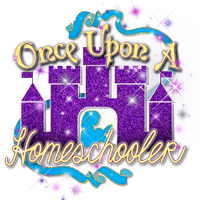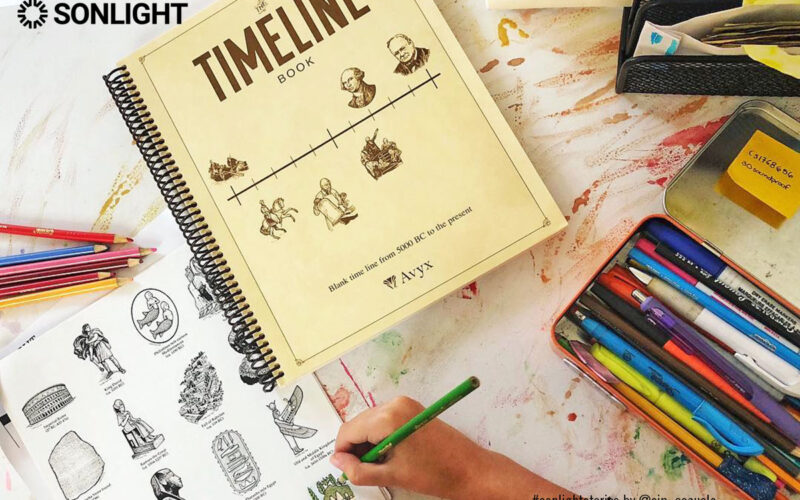Although Sonlight’s complete curriculum makes choosing a program for your child easy, The Timeline Book is can seem rather vague to new homeschoolers. They may have a hard time visualizing how it works or what benefits it brings.
Once I started using The Timeline Book and Timeline Figures regularly, I began to see their purpose. Then I came up with several methods to make timeline figures a meaningful part of our homeschool routine. To our surprise, timeline figures have become a fun, fast, and simple way to boost learning, just as Sonlight always intended.
What Are Timeline Figures?
Timeline Figures are black and white drawings of famous people and events printed on paper with a removable backing to reveal a sticker layer underneath, so they can easily be placed into The Timeline Book after cutting them apart. They can be colored in if you choose to make them appear brighter and more fun. The Timeline Figures are selected and identified in your Instructor’s Guide from the books you read throughout the year in your History / Bible / Literature (HBL) program.
Sonlight sells timeline figures for every level from HBL A through HBL J. These are included if you order a full grade package, or a complete HBL package.
One copy of The Timeline Book will take you through all levels. Our family likes to have one copy of The Timeline Book per child; others enjoy having one book per group of children doing the same level, or one book per family. In HBL 100 and up, timeline figures are suggested, but not provided.
Sonlight also include suggestions for other Timeline Figures from other levels. Not all historical figures that are discussed are placed in every year, so each year you are ensured a new batch of timeline figures to affix. These will be indicated by a different symbol in your Instructor’s Guide. You will notice those figures do not have stickers included. The timeline stickers for those figures can usually be found in a different HBL and will be added in another year. If you don’t want to wait that long, you can always write them in.
Why Use Timeline Figures?
Timeline Figures help my children sense how much time is passing. Younger children often have a hard time visualizing how far away ago the year 1612 was. They many not have realized Catherine the Great from Russia and George Washington lived during the same time period. Over the years, as you add more Timeline Figures, you can see your children actually forming connections between people they’ve read about in past years and people they’re currently studying.
Each time they look through The Timeline Book to find where a new figure goes, they create a new visual memory of people and events they’ve already discovered. This helps keep those names and events fresh in their memory banks instead of forgotten by the wayside.
Added Benefits of Homeschool Timelines
Not only do the Timeline Figures create reminders of what you are learning, but they also juxtapose a variety of learning styles and techniques, helping transfer short-term references into long-term knowledge.
- Visual: They observe what is happening in illustrations in the books. They can follow the lives of important people and visualize how certain events and other famous figures may have influenced their lives.
- Auditory: Your child hears what you are reading to them. They listen to stories about people, places, and events, and how they all tie in together. Then, they match the figure to the story.
- Interpersonal: You and your child discuss the story. Your child may confer with you over which timeline figures to use and where to place them, and review about what else is happening in the world, where events took place and who was there.
- Kinesthetic: Placing timeline figures helps learn events through movement and touch. Positioning timeline figures in The Timeline Book and paging through to find the right spot provides further stimulation.
- Reading and Spelling: As children read the names and events on the timeline figures, they are further familiarizing themselves with often unique or hard-to-spell names and places. They are seeing how the words are spelled and used together to form titles such as King Henry VIII, Sir Galahad, and Martin Luther King, Jr.


